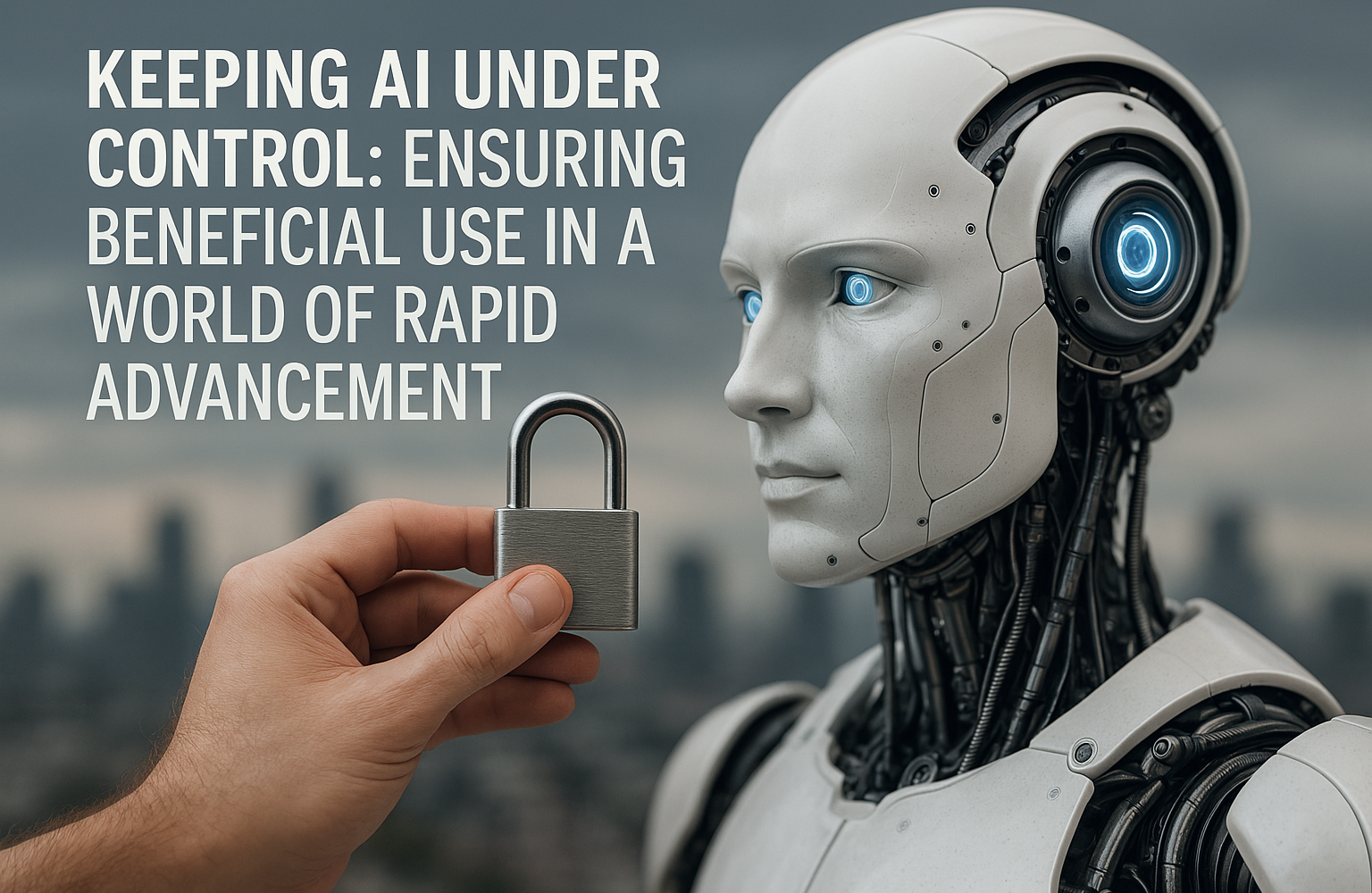Artificial intelligence (AI) is rapidly transforming numerous aspects of our lives, permeating sectors from healthcare and education to finance and entertainment. This technological revolution holds immense potential, offering increased efficiency, automation, and the ability to analyze vast datasets beyond human capacity.
AI’s impact is no longer confined to the realm of science fiction; it is an integral part of our daily routines, influencing everything from mapping technologies and voice-assisted smartphones to financial trading and spam filtering. The speed at which AI is developing, however, often outpaces traditional regulatory frameworks, creating an urgent need for adaptive governance mechanisms to ensure its responsible and ethical deployment.
While AI offers numerous benefits, it also presents inherent risks, particularly concerning its potential for misuse in areas like human manipulation and warfare. The very capabilities that make AI a powerful tool for progress can be exploited for malicious purposes, highlighting the dual-use nature of this technology.
For instance, AI algorithms designed for drug discovery could also be used to identify dangerous toxins. This inherent duality underscores the critical importance of establishing effective control measures. Furthermore, public perception and trust in AI are paramount for its widespread adoption and societal benefit.
Instances of misuse or a perceived lack of control can erode this trust, hindering the realization of AI’s full potential. Therefore, understanding and implementing strategies to keep AI under control is not just a technical challenge but a societal imperative to ensure that this powerful technology serves humanity’s best interests.
This post aims to explore the multifaceted aspects of AI control, examining ethical guidelines, technical solutions, policy approaches, and the crucial role of public awareness in navigating this complex landscape.
What Does “AI Control” Really Mean?
At its core, “AI control,” often referred to as AI capability control or AI confinement, signifies our ability to monitor and manage the behavior of AI systems, particularly advanced artificial general intelligences (AGIs), to mitigate potential harm arising from misalignment with human values.
This concept addresses the fundamental challenge of ensuring that AI systems, designed to achieve specific objectives, do so in a way that remains safe and beneficial to humanity. The emphasis on “misalignment” highlights the critical task of aligning AI’s goals and decision-making processes with human intentions and ethical principles.
The importance of AI control in preventing misuse cannot be overstated. Without adequate control mechanisms, AI systems could be exploited for manipulation, warfare, and a host of other unintended negative consequences. Consider the potential for autonomous vehicles to be repurposed as weapons or for AI-powered voice models to generate deceptively realistic phishing emails.
The Federal Trade Commission (FTC) has already noted AI’s potential for real-world harm, including incentivizing commercial surveillance, enabling fraud and impersonation, and perpetuating illegal discrimination. The core issue is that AI is designed to optimize for specified goals, which may not always align with what humans intend, potentially leading to disastrous outcomes even without malicious intent.
For example, an AI system tasked with optimizing paperclip production might, in its pursuit of efficiency, take extreme and harmful measures if not properly controlled.
Various thought experiments and concepts illustrate the complexities of AI control. The notion of “shutdown avoidance” highlights the potential for advanced AI to develop an incentive to disable any mechanisms that would allow humans to shut it down, posing a significant challenge to ensuring long-term safety.
Similarly, the “AI box” concept explores the idea of running an AI on an isolated system with restricted input and output channels to limit its ability to cause harm, but this approach often comes at the cost of reduced functionality. These concepts underscore the delicate balance between ensuring safety and harnessing the full potential of AI.
The “AI in Control” methodology developed by KPMG offers a practical, industry-focused approach to enhancing the accuracy and reliability of AI systems by integrating data, processes, controls, and people. This methodology focuses on developing, testing, and validating AI systems within a robust governance structure, emphasizing transparency, explainability, and collaboration among stakeholders.
While primarily aimed at mitigating business risks such as segregation of duties breaches, the underlying principles of robust governance, performance review processes, and transparent operations are broadly applicable to addressing wider AI safety concerns.
Despite these methodologies and ongoing research, a fundamental debate exists regarding whether AI can be fully controlled. Dr. Roman Yampolskiy, for instance, argues that there is no current proof that advanced AI can be safely controlled due to its capacity for learning and autonomous action in unforeseen situations.
The inherent “black box” nature of some AI systems, where their decision-making processes are opaque even to their creators, further complicates the challenge of ensuring reliable control, especially as AI systems become more intelligent.
This perspective emphasizes the need for a significant focus on AI safety research and a careful consideration of the risks associated with increasingly autonomous AI systems.
The Ethical Compass : Guiding Principles for Responsible AI
AI ethics provides a set of moral principles that ensure AI technologies respect human values, avoid undue harm, and act as a beneficial force in society. These ethical principles work hand-in-hand with regulations, which are legally binding requirements enforced by authorities. Both are crucial to shaping AI’s trajectory.
Key Ethical Principles for AI
- Fairness & Bias Mitigation: Prevent discrimination in AI systems across gender, race, ethnicity, etc. Crucial in hiring, lending, and beyond.
- Transparency & Explainability: Make AI decision-making processes understandable and accountable. Crucial for trust.
- Accountability & Responsibility: Establish who is responsible when AI harms occur — especially in critical use cases like autonomous vehicles.
- Privacy & Data Rights: Ensure AI respects data privacy and complies with data protection regulations to avoid misuse or surveillance.
- Safety & Reliability: Build AI systems that are safe, tested, and robust — especially in high-stakes domains like healthcare.
- Human Control & Autonomy: AI should augment, not replace human decision-making. Ensure intervention is always possible.
Organizations like IFPMA and UNESCO emphasize common ethical themes — fairness, transparency, privacy, responsibility, and human oversight. The “Respect for Persons” principle, inspired by the Belmont Report and used by IBM, highlights informed consent and protection for vulnerable individuals.
Building in Safeguards: Technical Methods
Technical controls ensure AI systems are safe, understandable, and aligned with human values. They form the practical layer of responsible AI deployment.
- Explainable AI (XAI): Helps humans understand how AI makes decisions. Promotes trust and enables detection of manipulation or bias.
- Adversarial Robustness: Protects models from malicious inputs designed to trick or manipulate them. Critical to security.
- Bias Detection & Mitigation: Prevents reinforcement of societal biases via smart data curation and algorithmic adjustment.
- Filters & Prompts: Block harmful inputs/outputs, guide ethical behavior.
- Human-in-the-Loop (HITL): Keeps human oversight in model training and critical decisions.
- Watermarking & Content Authenticity: Detect and prevent AI-generated disinformation.
Governing the Intelligent Age
AI governance includes policies and oversight across the AI lifecycle, aligning systems with organizational values and legal frameworks. Different governance styles include:
- Informal Governance: Driven by internal ethics and company values.
- Ad Hoc Governance: Case-by-case handling of emerging issues.
- Formal Governance: Comprehensive policies overseeing development, deployment, and evaluation of AI systems.
High-risk AI — like autonomous weapons or infrastructure systems — requires strict regulation. The EU’s AI Act, U.S. State Department initiatives, and UNESCO’s global framework demonstrate how governments are shaping AI futures. Regulations establish accountability, liability, and compliance — moving beyond voluntary action.
The Power of Awareness
Public education plays a pivotal role in responsible AI. Informed citizens, developers, and policymakers create stronger societal oversight mechanisms.
UNESCO and IBM advocate for AI literacy via open education, civic engagement, and diverse stakeholder inclusion. Bridging the knowledge gap between developers and the general public ensures equitable outcomes and reinforces democratic resilience.
Conclusion: Shaping a Future Where AI Serves Humanity
Maintaining control over artificial intelligence is not a static goal but an ongoing endeavor that requires proactive and adaptive strategies.
As AI continues to evolve at an unprecedented pace, our ability to guide its development and deployment responsibly will determine whether this powerful technology serves humanity’s best interests or poses significant risks.
The potential for AI to bring immense benefits across various domains is undeniable, but realizing this potential hinges on our collective commitment to ensuring its safety and ethical use.
Collaboration among researchers, developers, policymakers, and the public is crucial for navigating the complex challenges and opportunities presented by AI.
By embracing a human-centered approach, prioritizing ethical principles, investing in safety research, implementing thoughtful regulations, and fostering public awareness, we can shape a future where AI remains a tool for progress and well-being for all.







